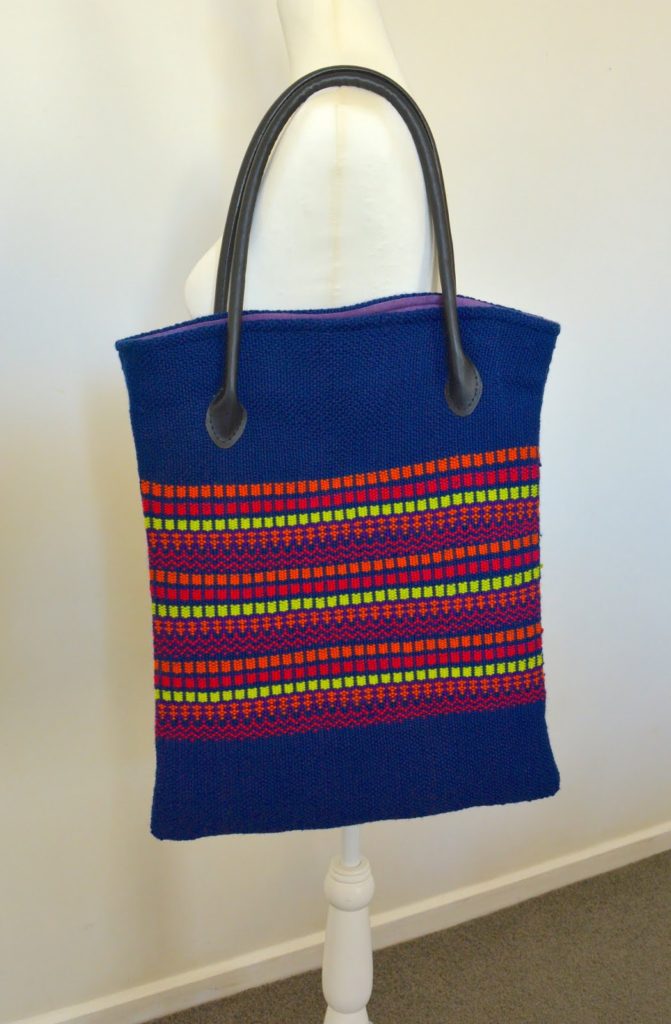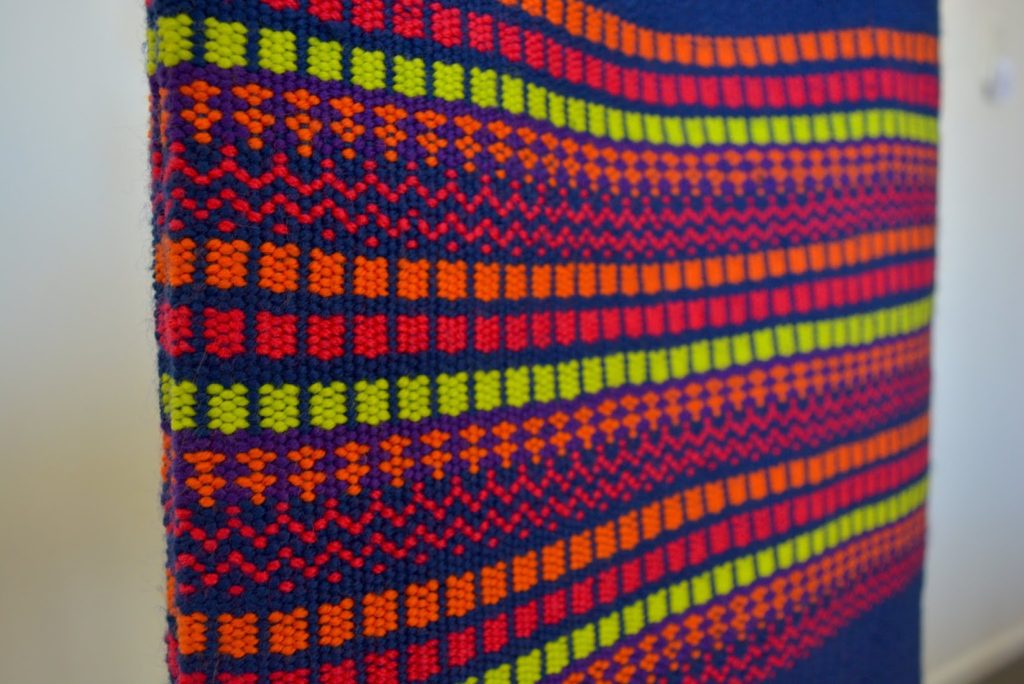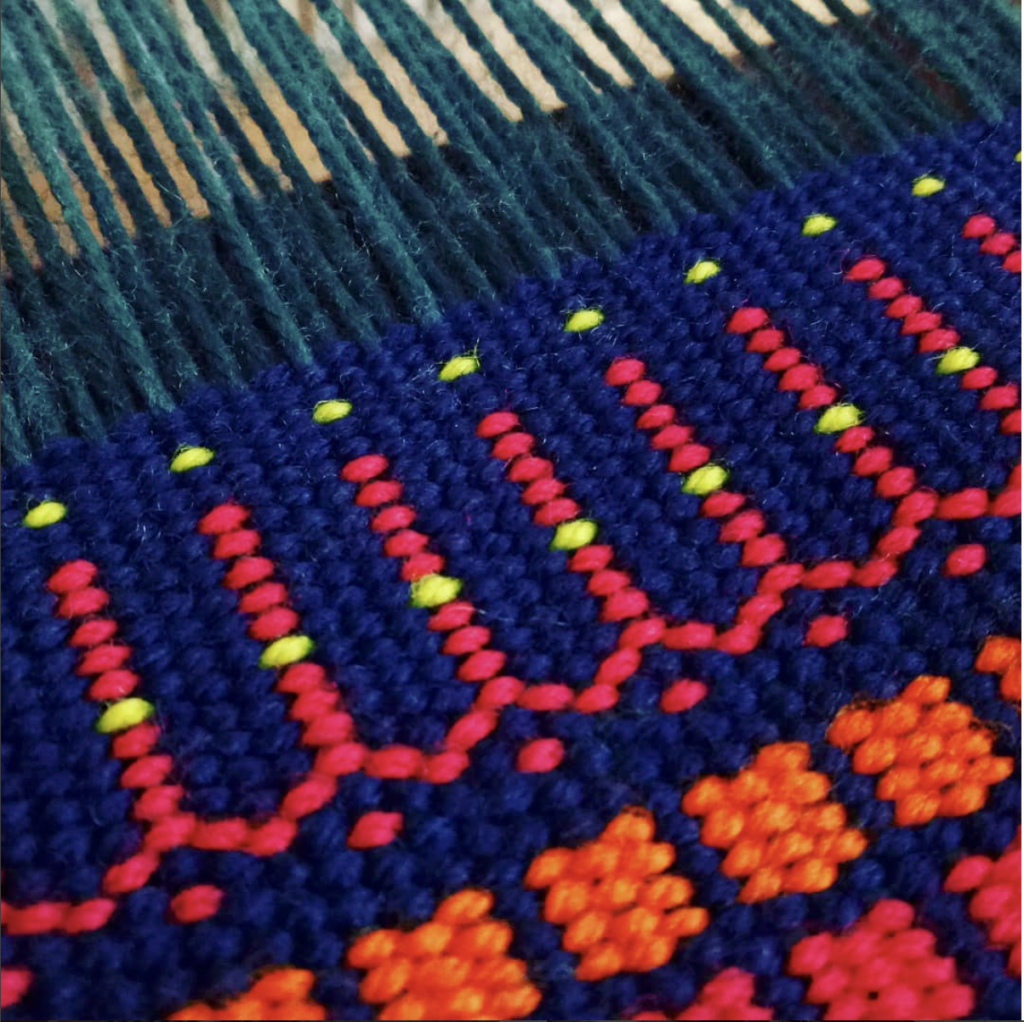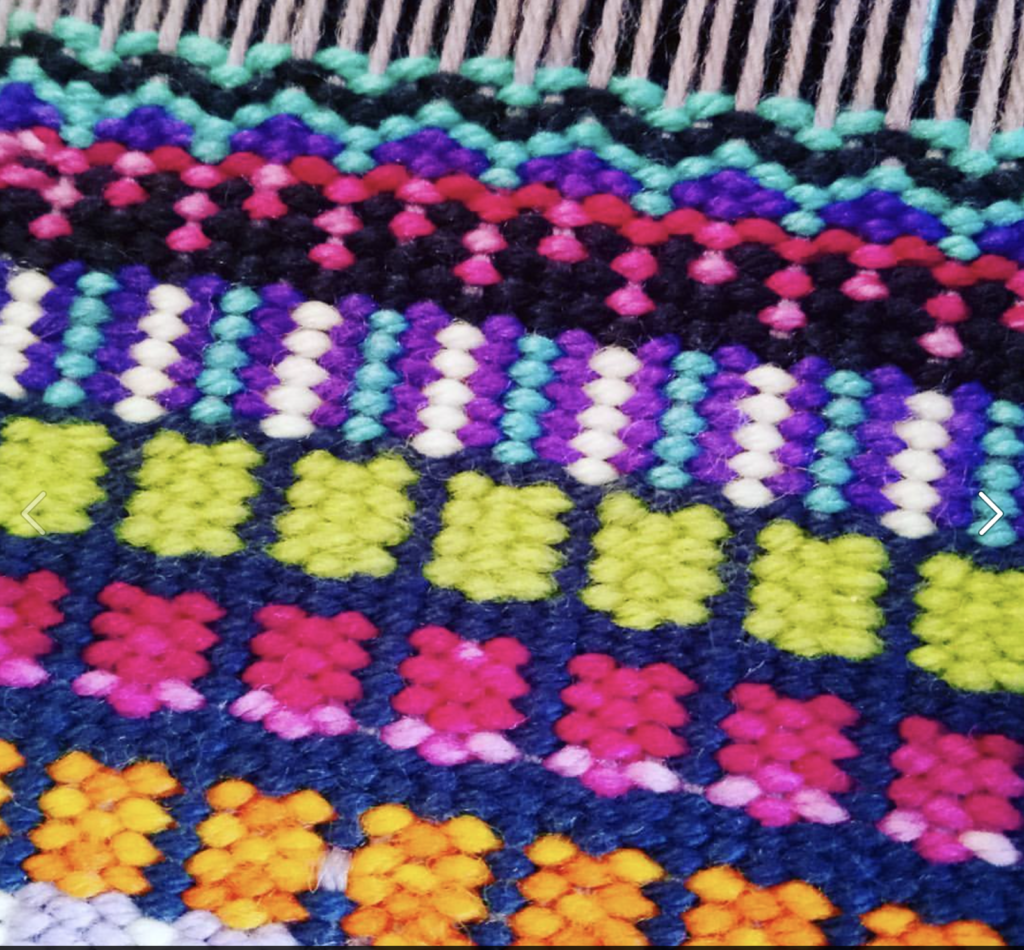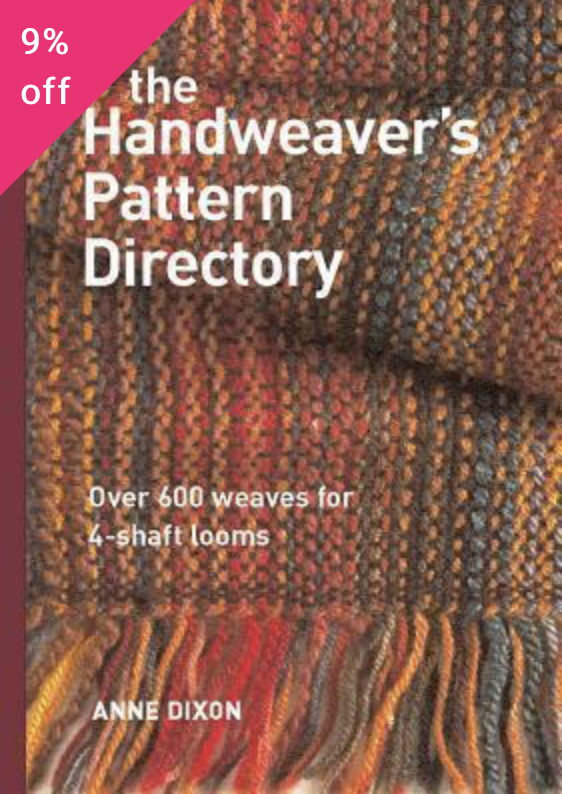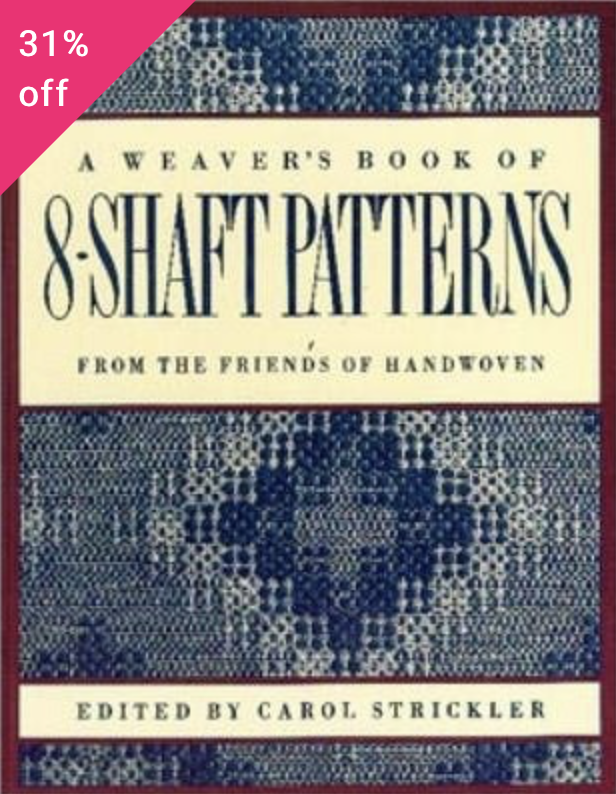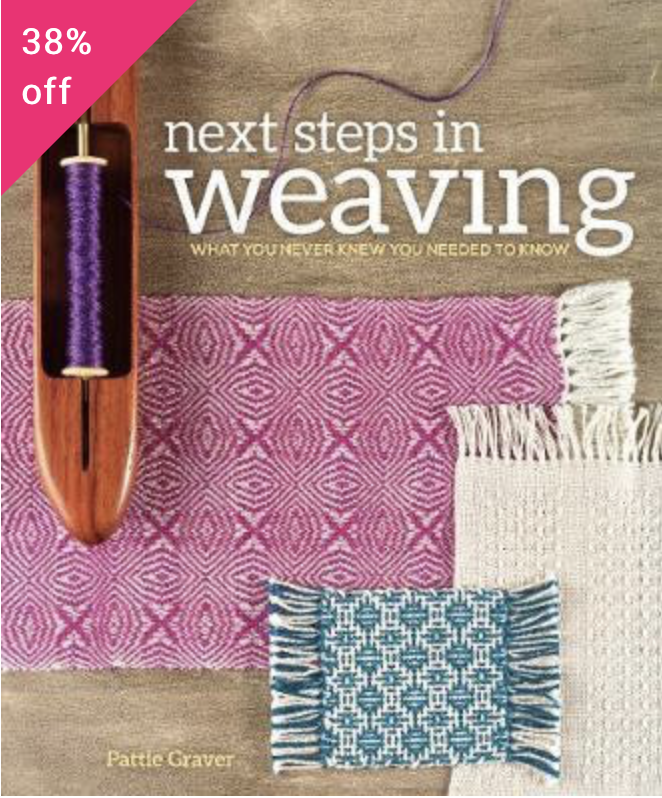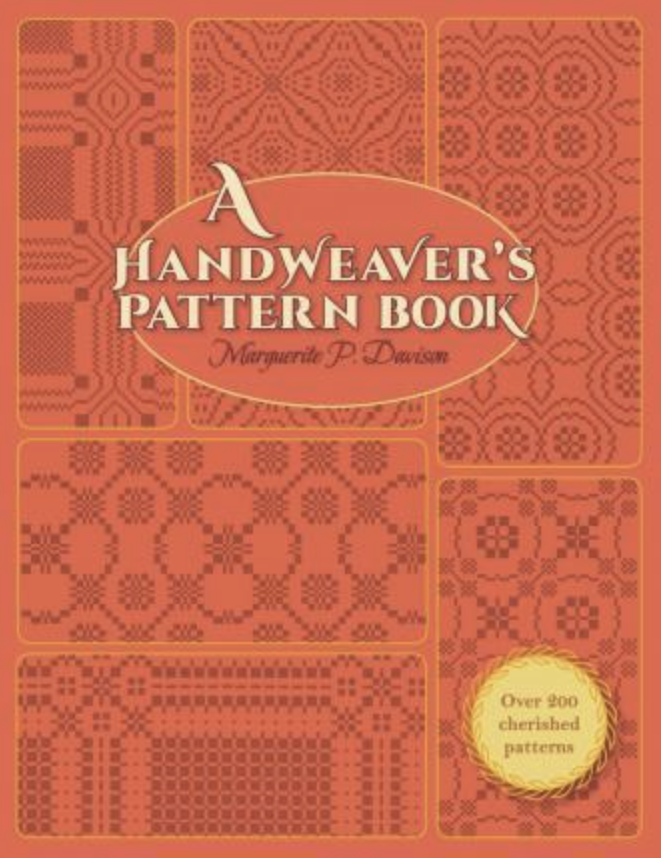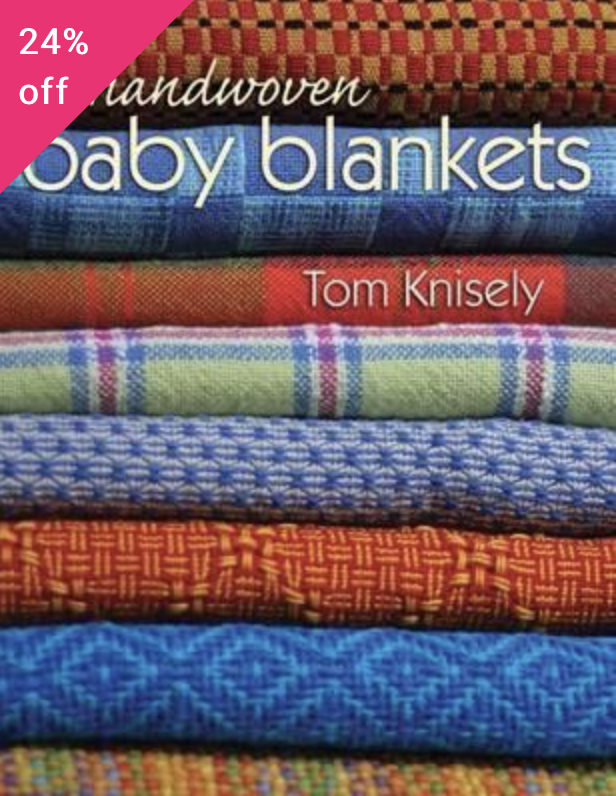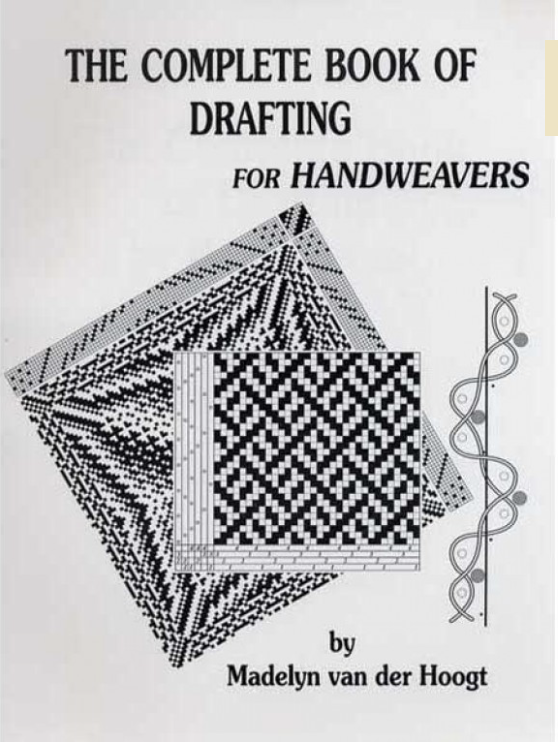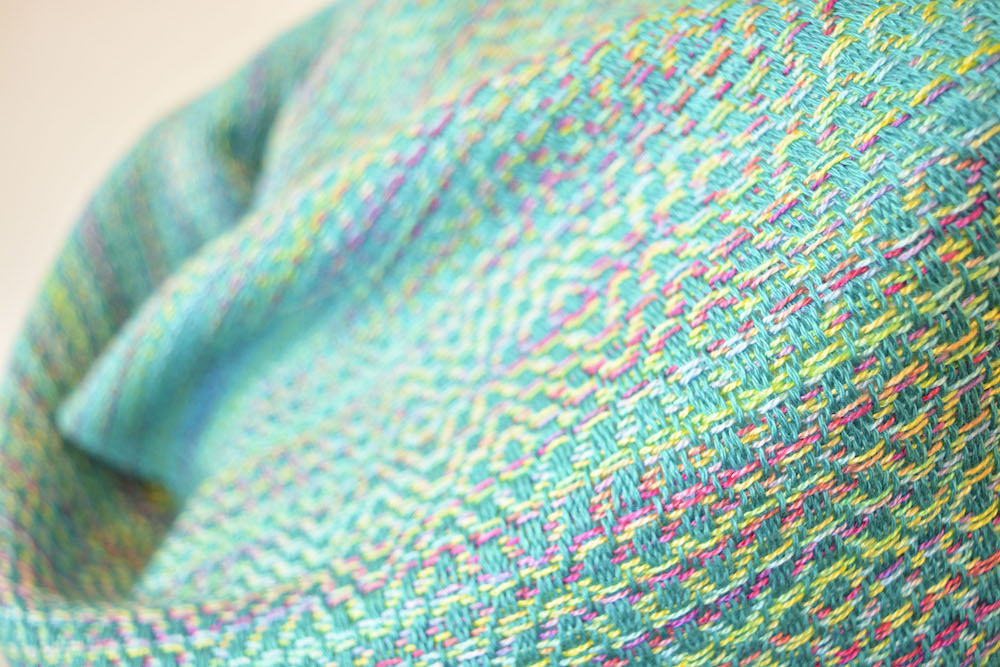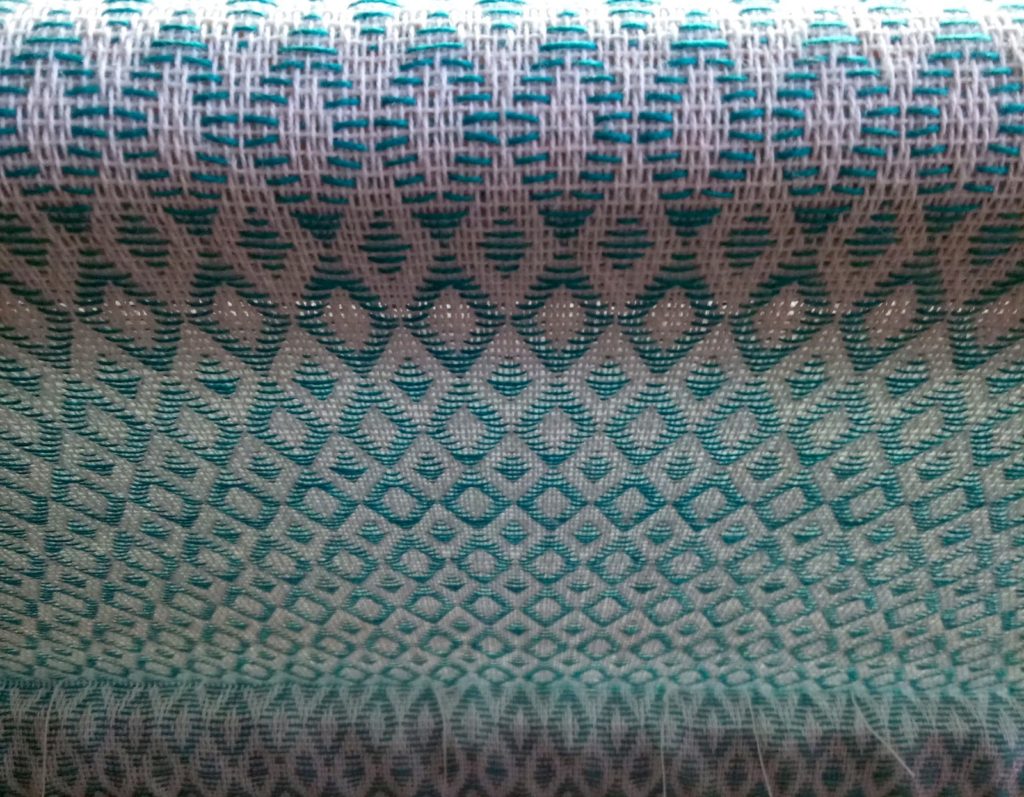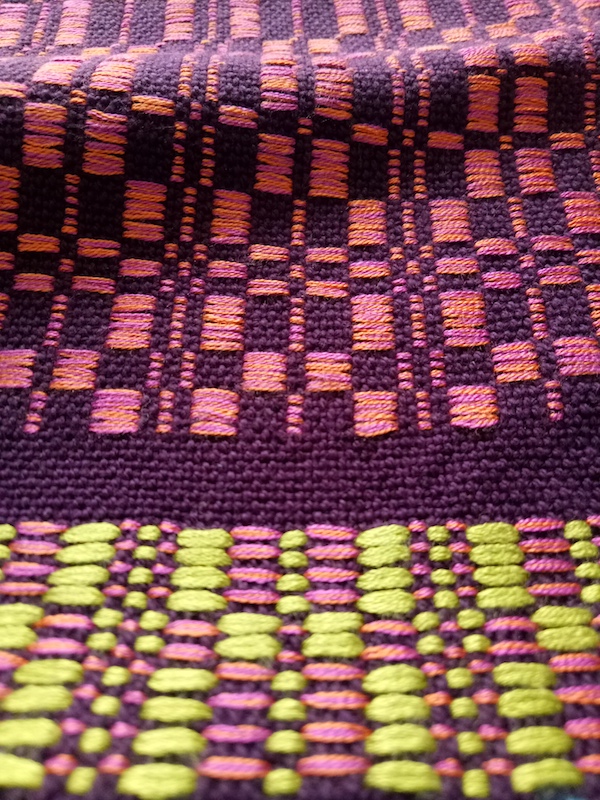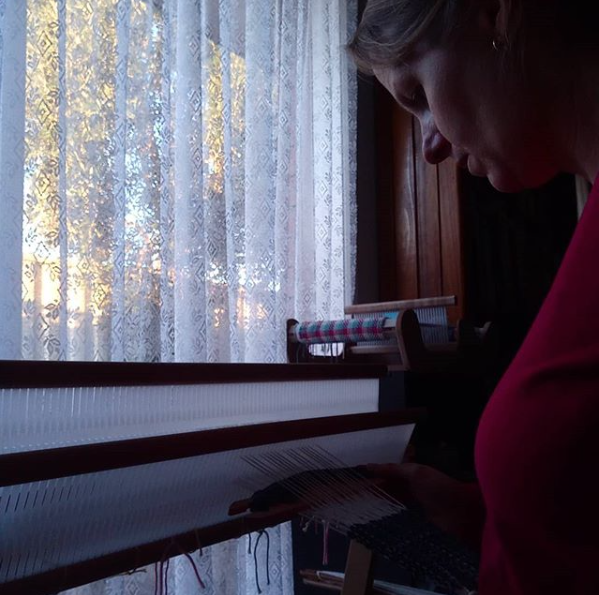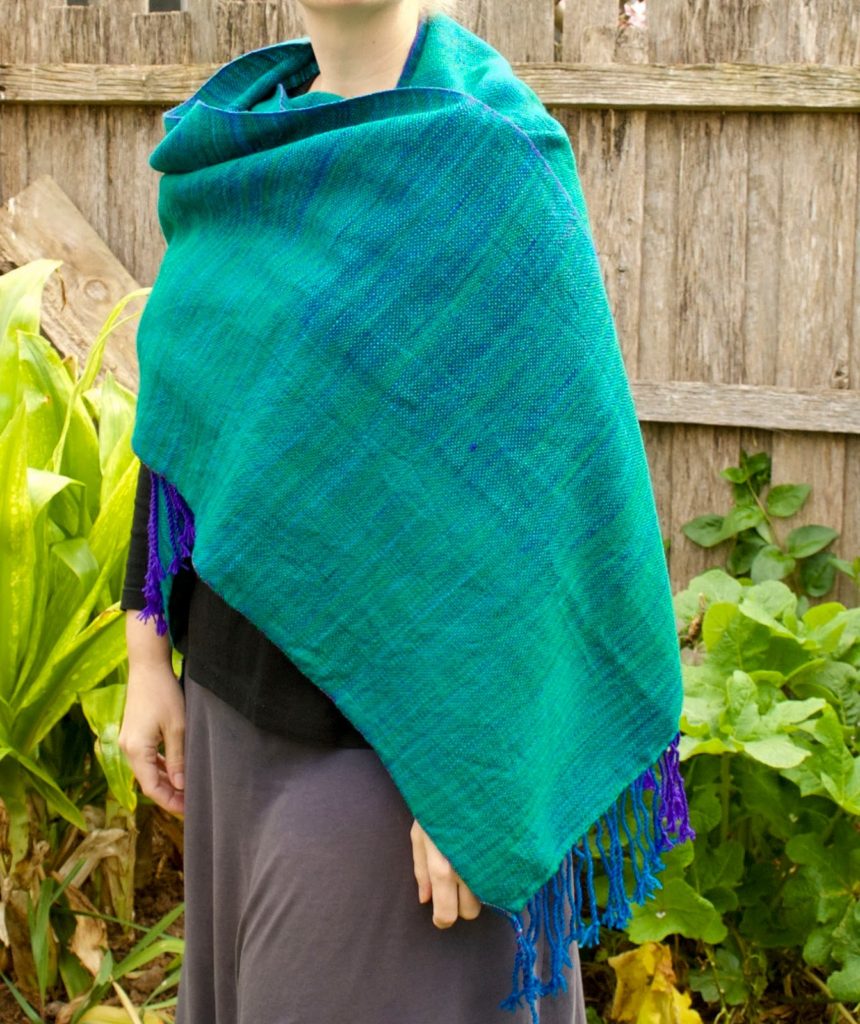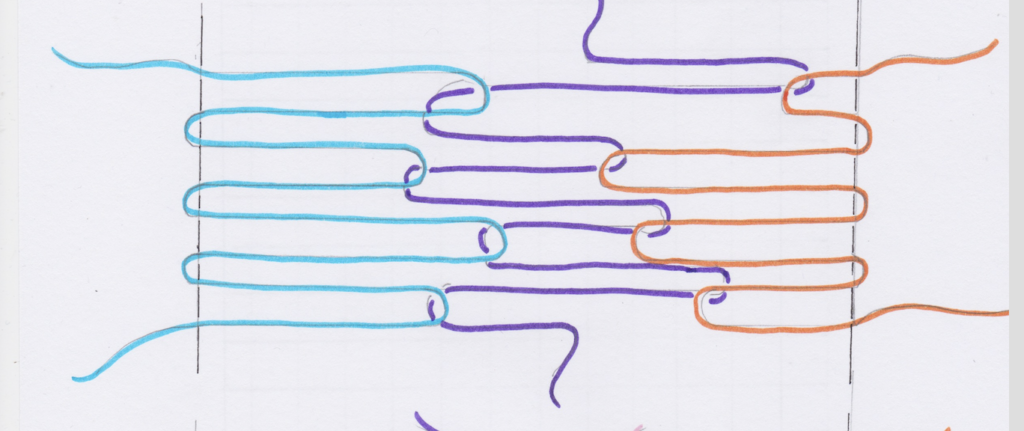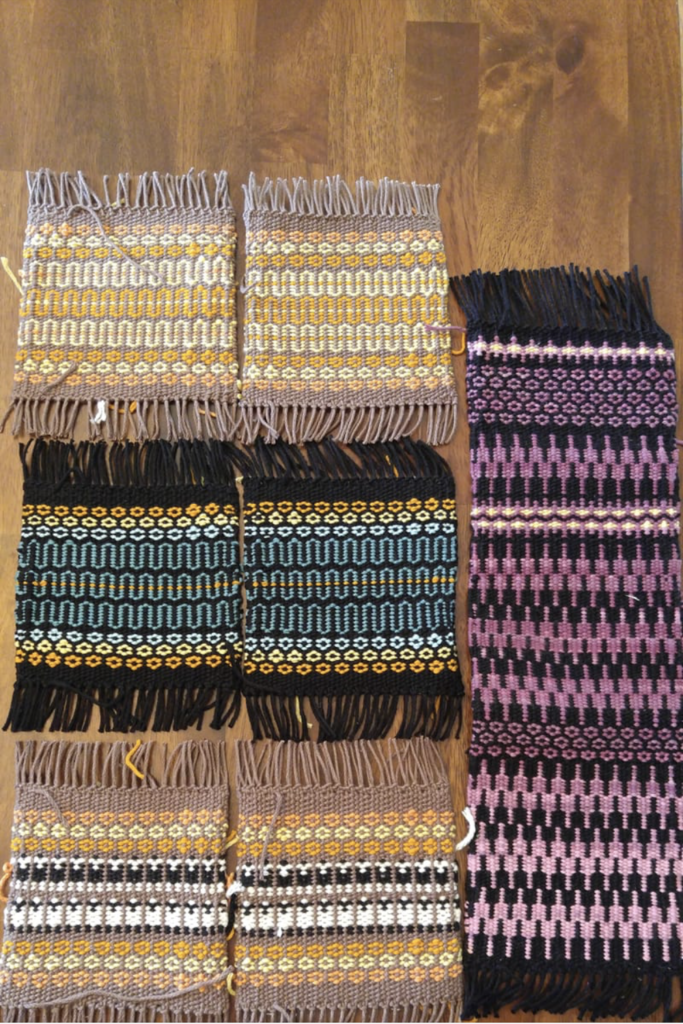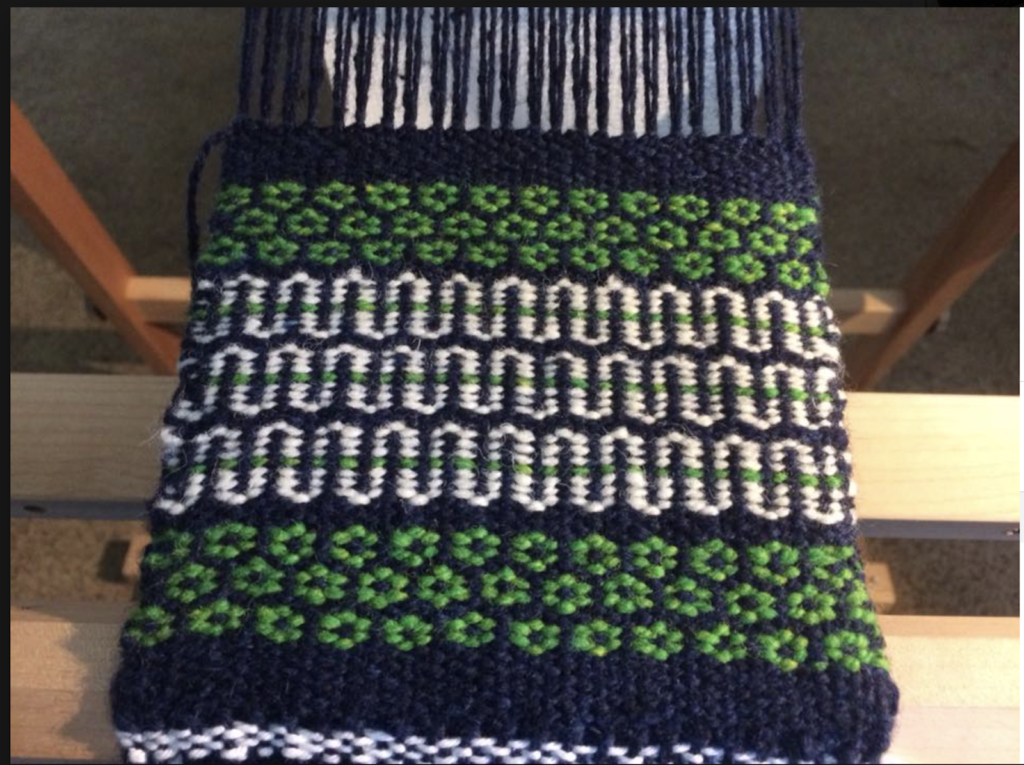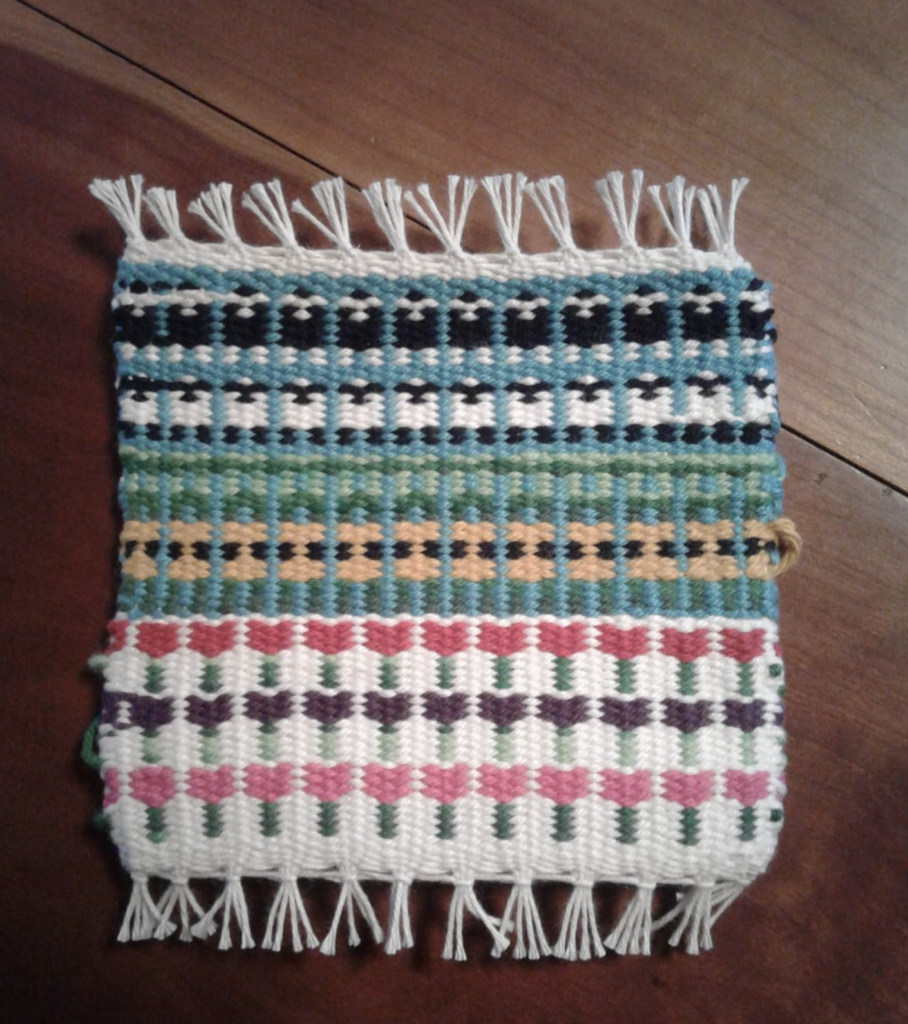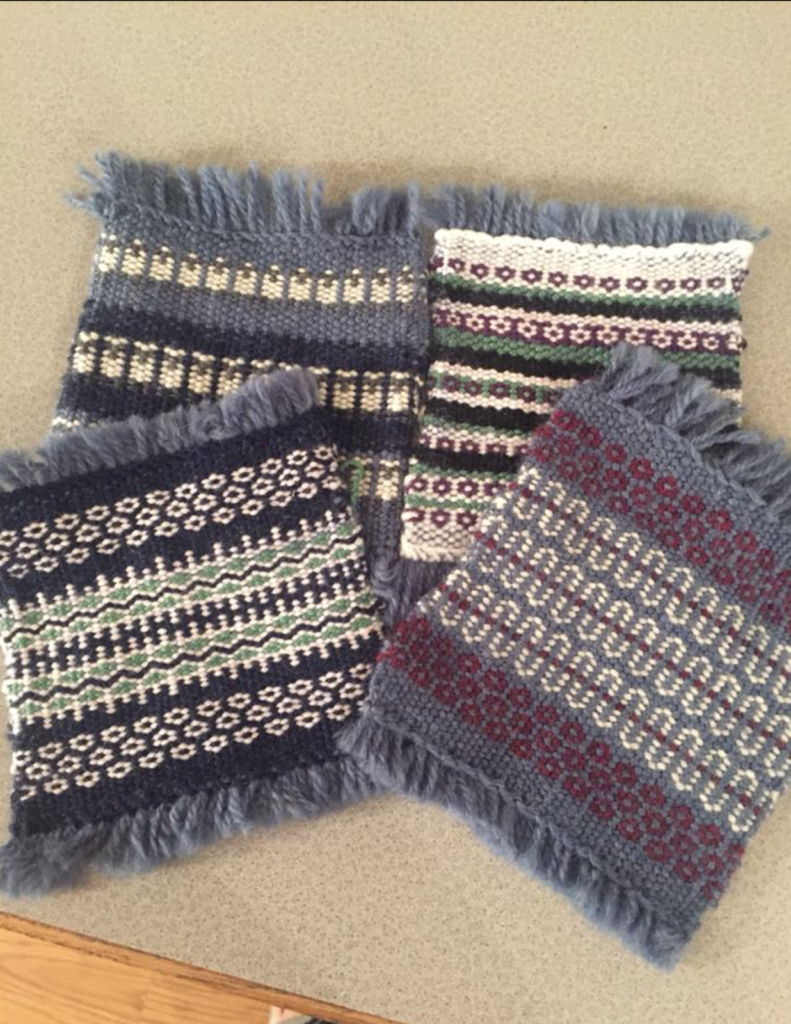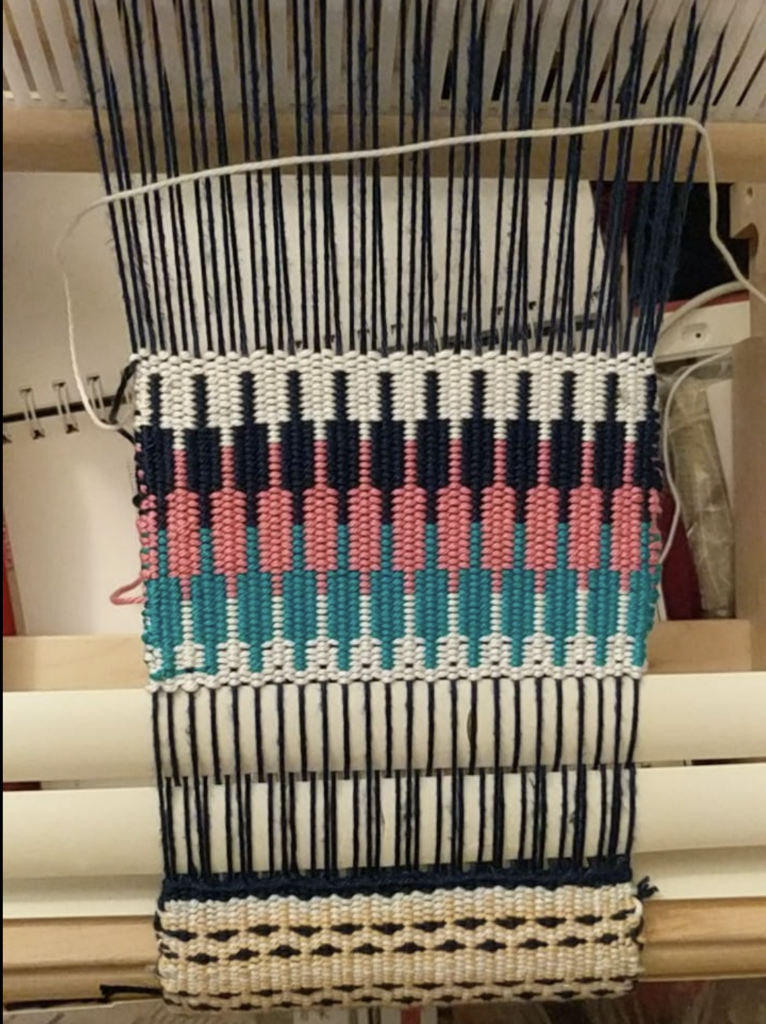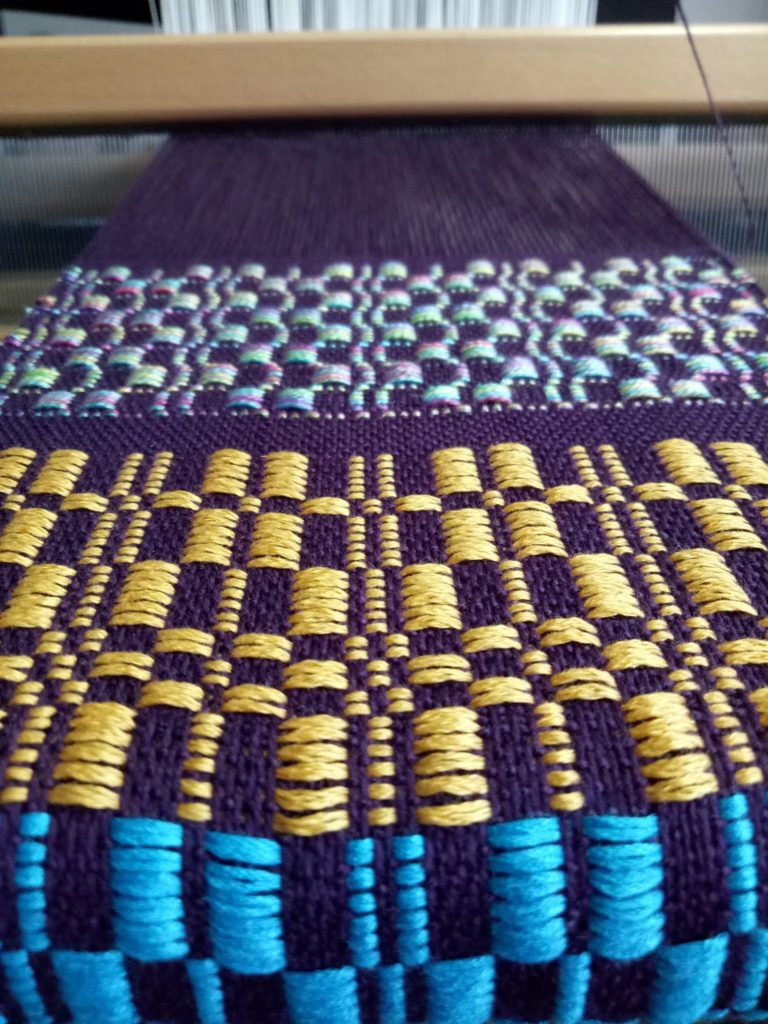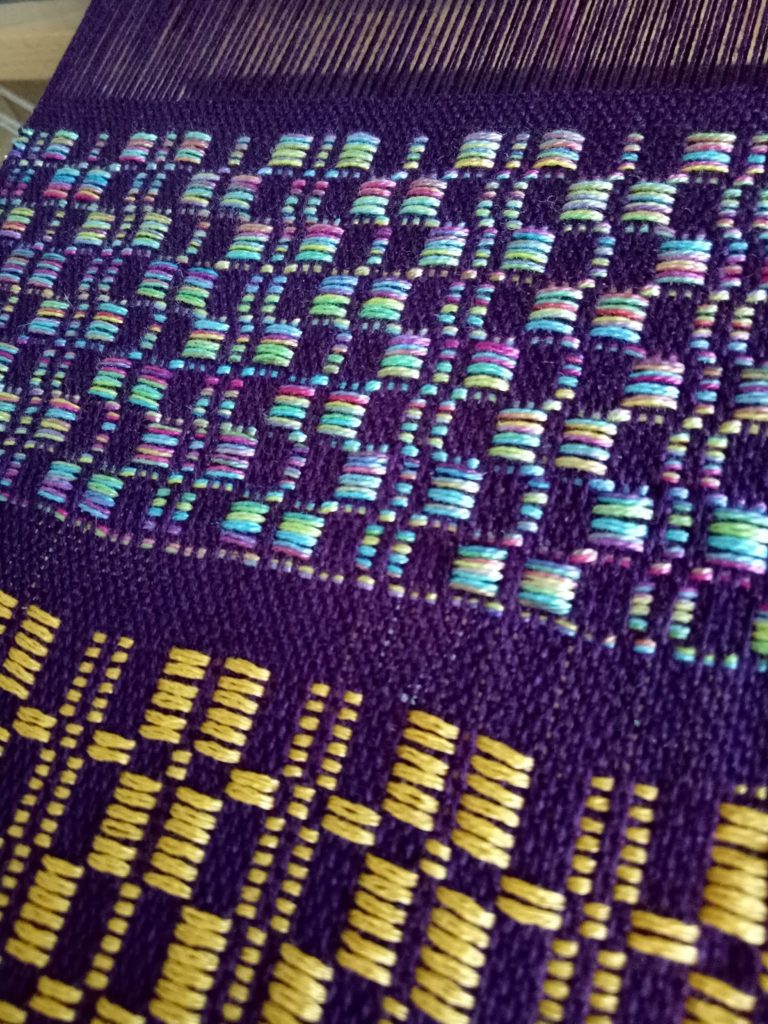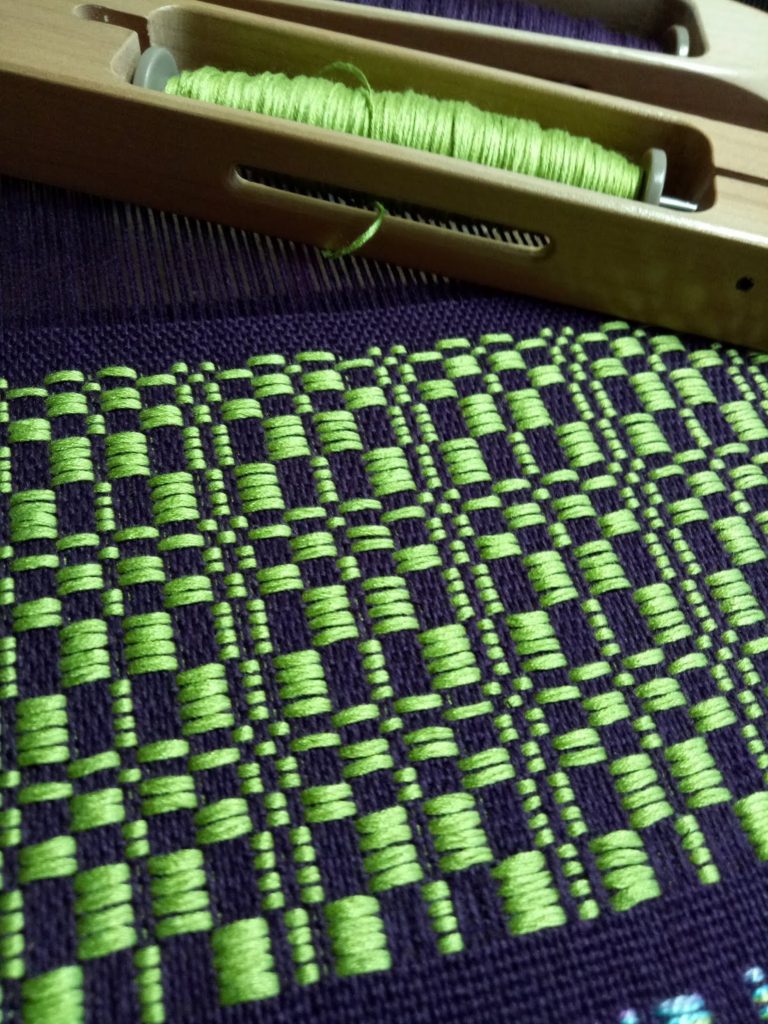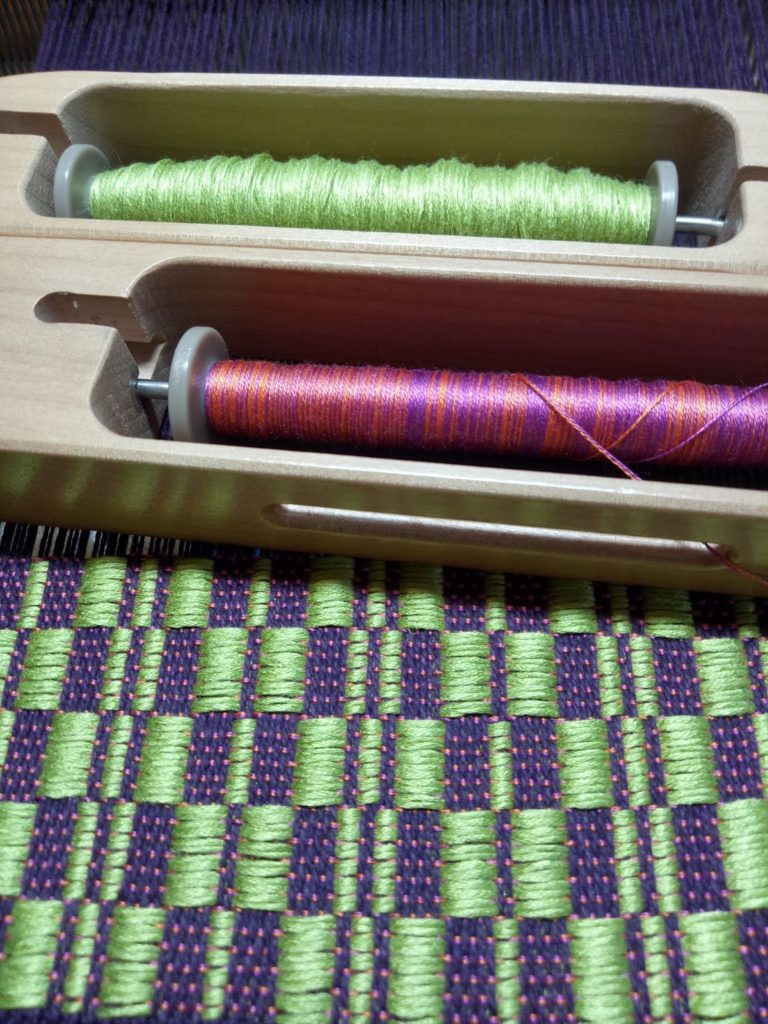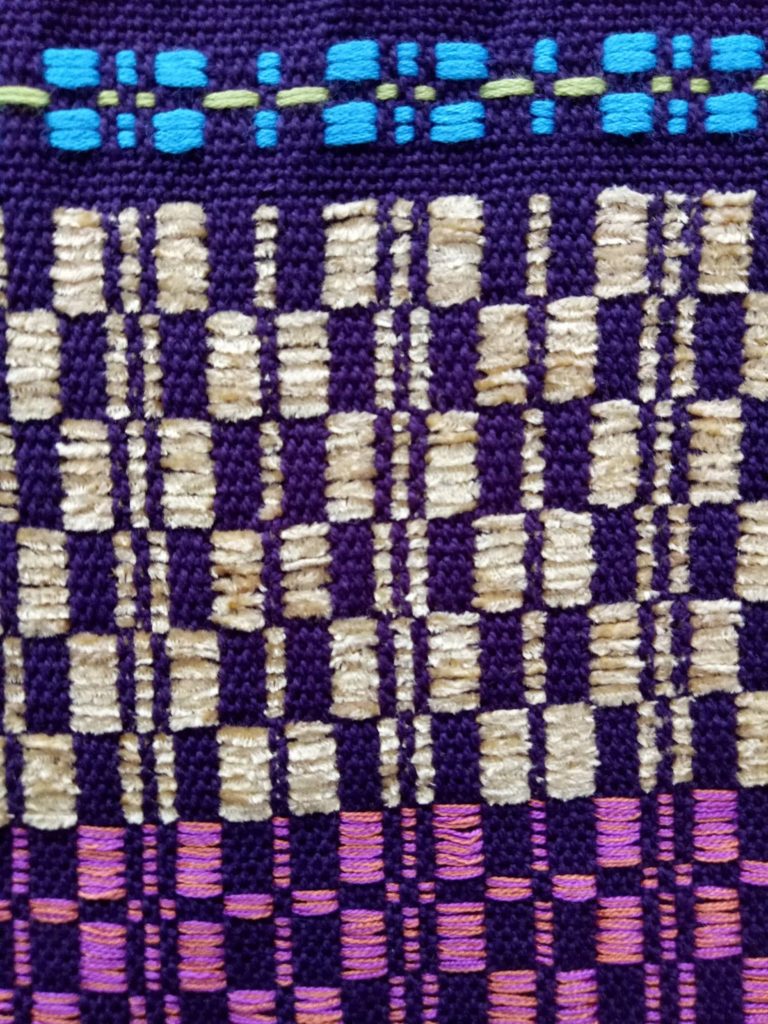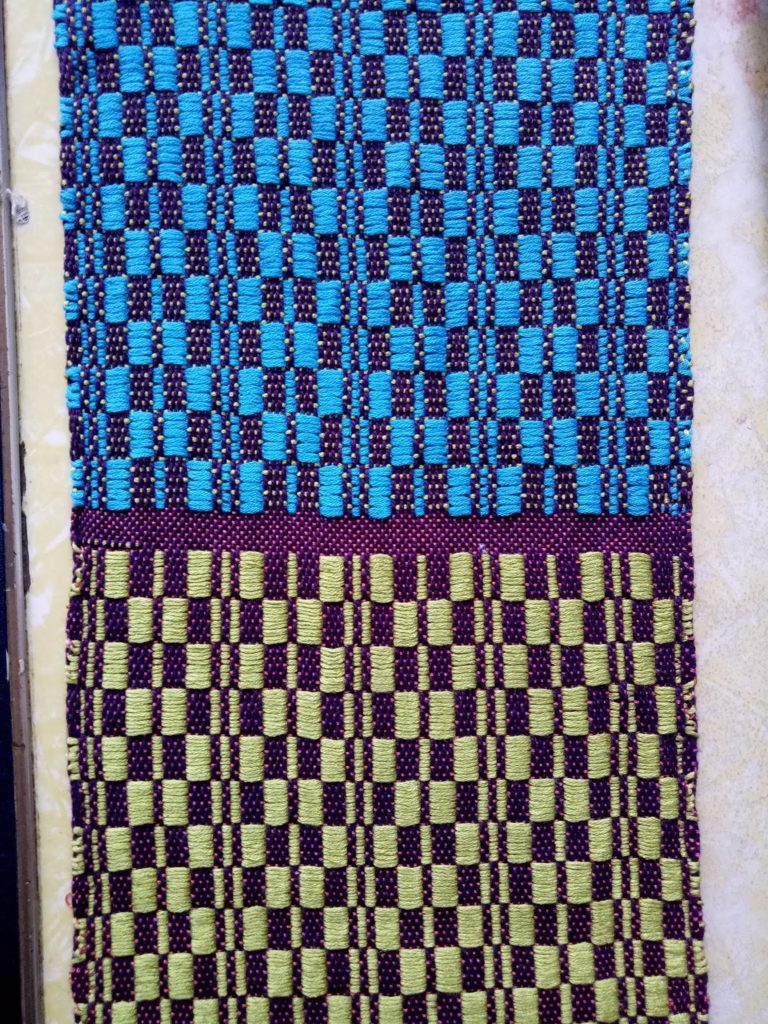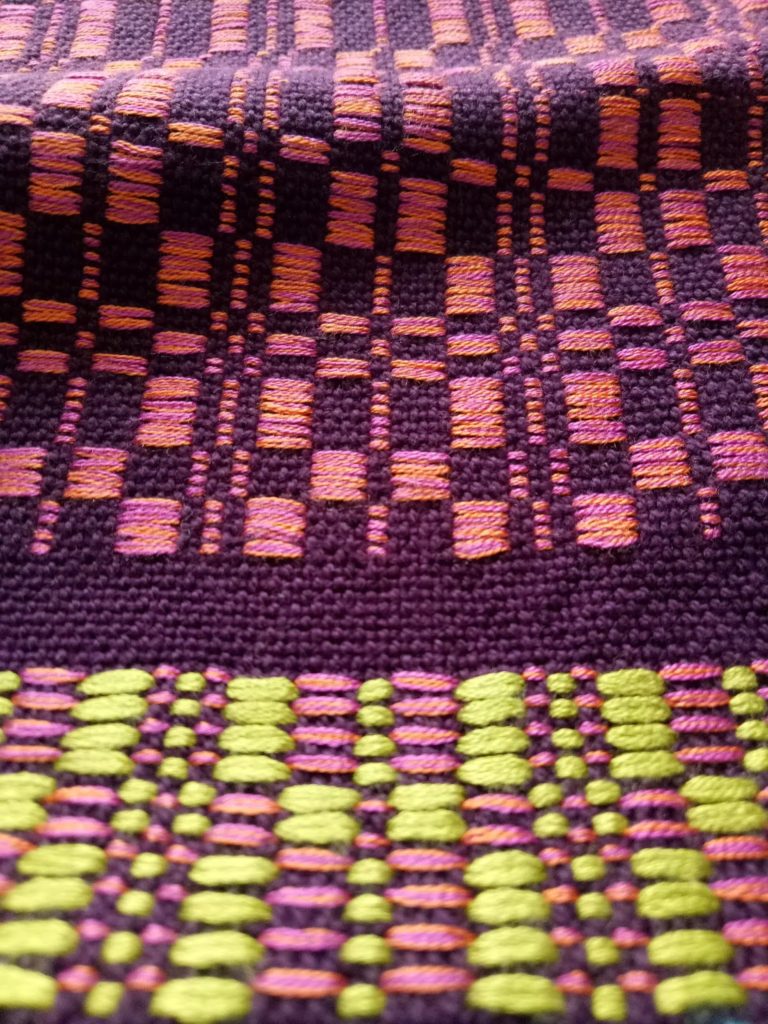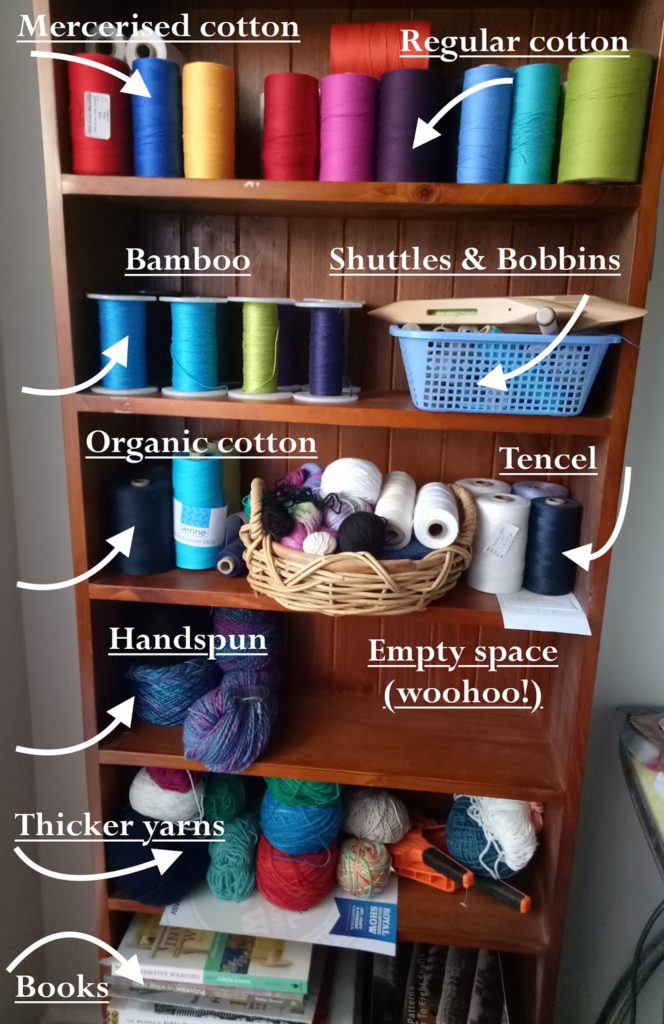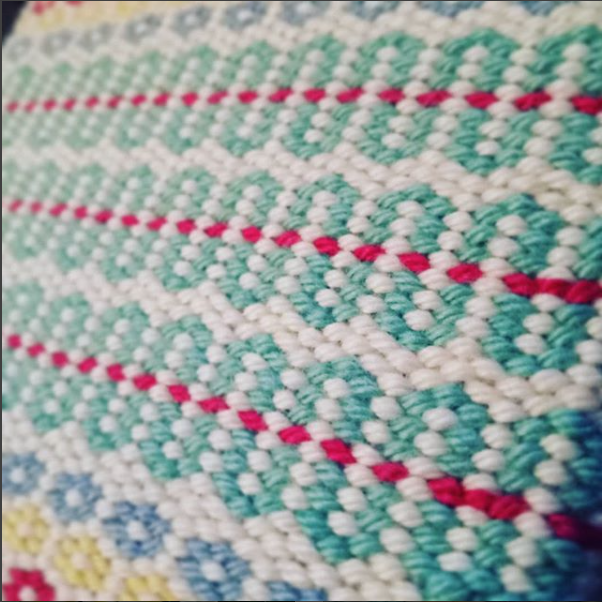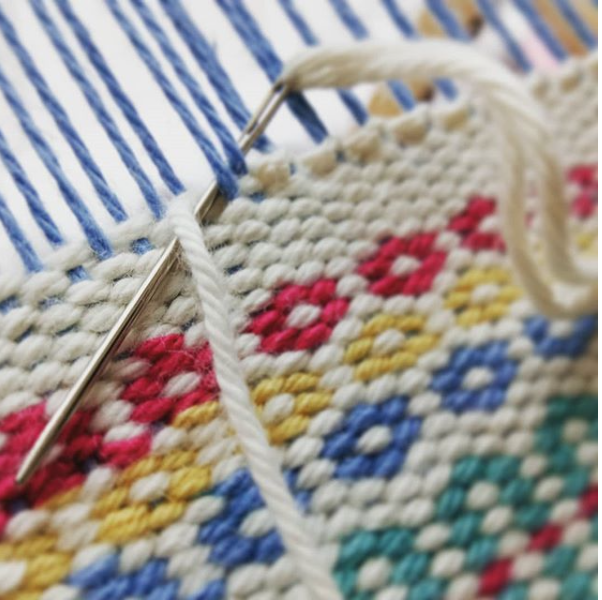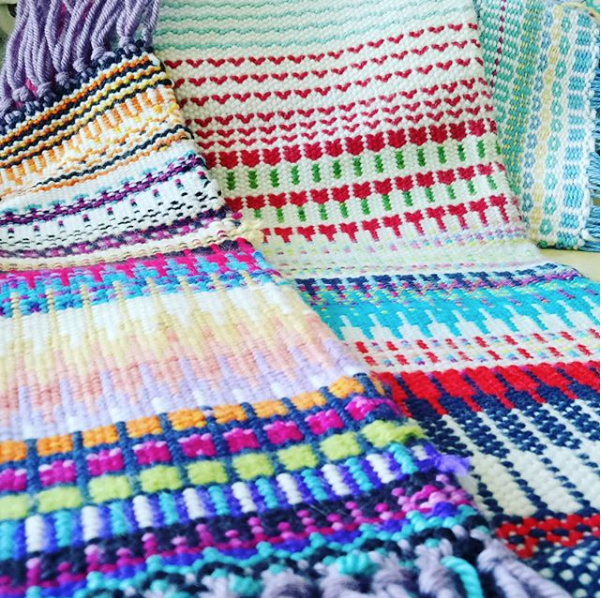Great rigid heddle weaving books!
I’ll start with my favourite and most used book, in fact, this is the first rigid heddle weaving book I bought.
The Weaver’s Idea Book by Jane Patrick This book has so much content and is great for beginners. It allows you to start with the basics and build as you go. Just about everything you need to know initially is contained within these pages and I think of it a little like a training ground for new weavers. It is also hardcover with spiral binding, making it easy to lay flat and view while you’re weaving. Highly recommended!

Weaving made Easy by Liz Gipson. A lovely little book that includes information on loom set up. The projects are simple enough for beginners and interesting enough for all weavers.
Woven to Wear by Marilyn Murphy. I also read this book as a newer weaver and loved how it stirred my imagination. It contains simple garments with lots of plain weave, making it great for beginners, particularly those wanting to get a taste for sewing with your handwoven. The sewing projects are simple rather than finicky, with the use of large shapes instead of small pieces.

Inventive Weaving on a Little Loom by Syne Mitchell This book is awesome value for beginners to intermediate with lots of ideas. For the newer weaver, there is practical information and plenty of inspiration for once you have the basics down. I think of this book as one that you may not fully appreciate until you have some more weaving experience, perhaps a book that will grow with you through your weaving journey. Towards the middle and later part of the book are projects and ideas that may be too challenging for a new weaver, but that an enthusiastic and curious weaver will definitely want to make use of later on. There is a lot of information, it is attractively set out and a joy to flip through.

Weave, Knit, Wear by Judith Shangold This book is responsible for opening my eyes and quickening my heart over the range of possibilities with a rigid heddle loom and garment making. Judith uses mostly plain weave, colour and design to make fabric look special. She includes design layouts and illustrations to help you wrap your head around how garments can be constructed. What I really love about this book is the fusion of weaving, knitting and crochet added in. It really has encouraged me to think outside the square and maximise my rigid heddle loom.
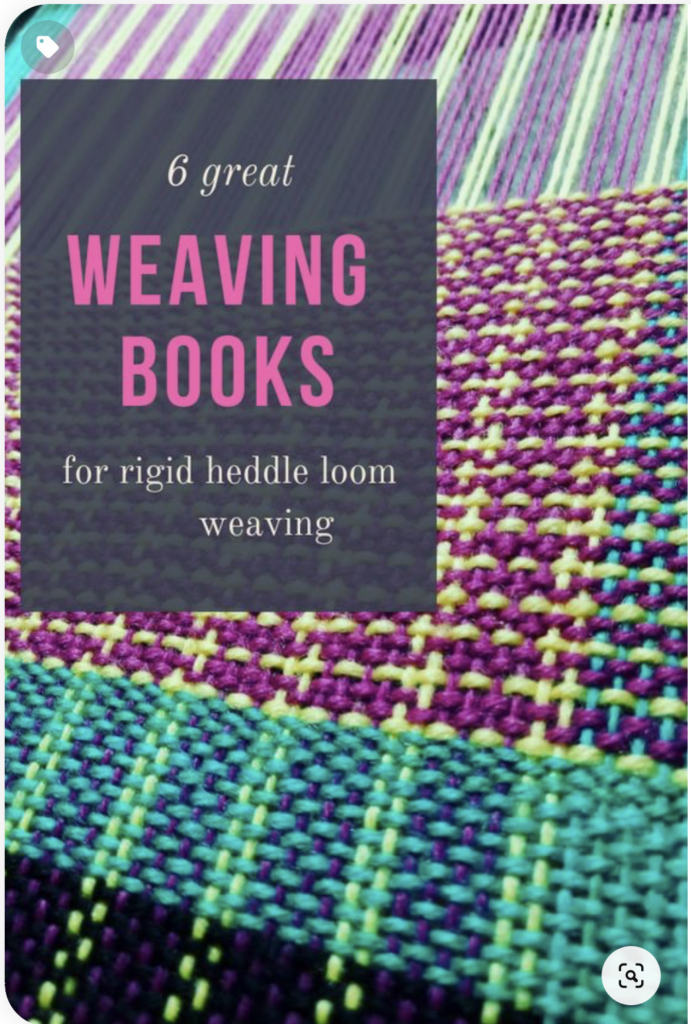
Simple Woven Garments by Sara Goldberg Another really great book on making simple garments with simple, colourful, hand woven cloth. There are more than 20 projects and they are all wearable! There are also details on adjusting garments to your own specifications.
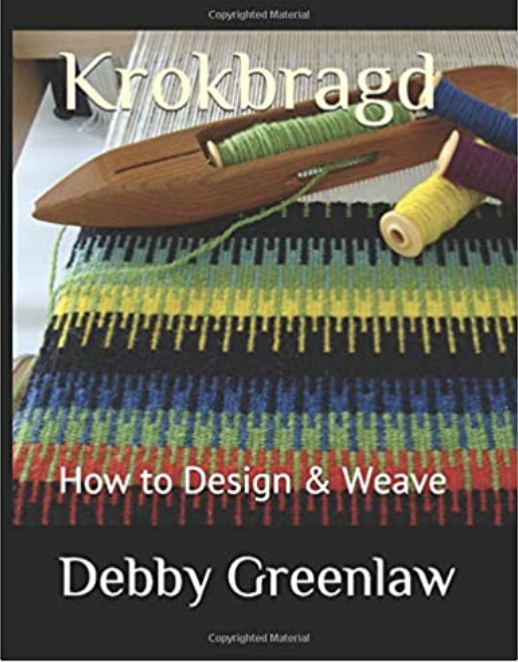
I had to come back and edit this post to include Debby Greenlaw’s new book Krokbragd: How to Design and Weave. I actually like this book so much that I wrote a review for it here, so pop over and read that if it sounds like a book you would be interested in.
To see all my book recommendations is one easy to access place, visit my Amazon Shop.

If you would like to watch this post in video format please click on the video below.
I hope you enjoyed my list!
Until next time…
Happy Weaving!
My Favourite Books for Multi Shaft Weaving
I have already made a video on my favourite rigid heddle weaving books, but haven’t talked about my floor loom or multi shaft books.
This is certainly not an exhaustive list, and I definitely plan on increasing my collection over the years, but these are a few that I have found particularly good.
*This post contains affiliate links
I will start with my absolute favourite. If, in some terrible circumstance, I had to choose just one of the following books to keep, this one would be it!
The Handweaver’s Pattern Directory by Anne Dixon only covers 4 shaft weaves, and yet, with the number of pattern drafts you could feasibly use this book for years before even considering buying an 8 shaft book. There is nothing I do not love about this book! Yes, it is a little expensive, but I consider it my “go to” for any 4 shaft weaving. It’s a hardcover book with spiral binding. This is awesome because you can lay the book flat to follow a threading or treadling pattern, and the hard cover prevents any damage to the pages. I’ve had mine for many years and it still looks as good as new. The layout shows you exactly what you can expect from each draft by providing colour pictures and yarns used to achieve each one – great for those just starting out.
Where it all started (long post!)
While these years have flown so fast and so much has happened since I hesitatingly uploaded that first video, I thought it a good time to reflect and share a bit more of my journey with you, particularly if you have only found me recently.
Some of you have been with me almost since that first video, and I believe that I have most to thank you for. It is the first viewers who encouraged me to make more videos, who threw amazing compliments in my direction, and who have shown me so much love these past 3 years.
So, lets go way back to the beginning. Before weaving, I had many, many crafts under my belt.
[embedyt] https://www.youtube.com/watch?v=FuhY5e1X4-k[/embedyt]
I didn’t expect that many people would watch it, and that was fine by me, I just wanted to share with anyone who may be interested. It wasn’t long before I started getting comments and very positive feedback. People were asking me to make more videos and I couldn’t believe it.
Me? Introverted, dull as dishwater housewife me? I was pretty astounded at the response!
I made some more videos and I discovered something about myself. I loved teaching! I had taught my kids at home for a long time (my oldest homeschooler is now 20!), but this was teaching adults something I was really passionate about and I wanted to keep doing that!
As I made the videos, the cost of materials started adding up and I had no job or real income at this time. Youtube had a “paid channels” feature and so, I started one. I charged roughly $2 per person, per month and this enabled me to keep going because people joined and paid.
In my “spare time” I started putting together some weaving designs to sell in my Etsy shop. I now have many designs, and once again, I’ve been amazed at the response. I also love designing and look forward to continuing doing that.
Back to Youtube, where it was abruptly announced that the paid channel platform was closing. This left me with a quandary – should I try to find another platform or is this a sign that I should close down. Well, my students came to my rescue and begged me to continue.
A short time later, I found a great hosting platform – Teachable and have been with them ever since. Youtube closing the paid channels was a HUGE blessing in so many ways and has allowed to go forward in ways I could not have imagined. If you haven’t seen my Online Weaving School, please check it out to see what I’m talking about!
I now have 61 classes available, including my first floor loom course. Being on a professional platform has challenged me to do better and construct my classes to give students an optimal learning experience. I must be doing something right, because the school continues to grow and I continue to get awesome feedback.
All of this has been made possible because people like you support me in so many ways. You support me with your enthusiasm for weaving and learning. You support me financially, which allows me to continue to grow this little business. You support me on a personal level with your kind messages and many prayers over the years.
A topic that is often discussed in business circles is “success”. Success to many, seems to be when you reach 6 figures, as though there is some magic monetary value that means you have made it.
I earn a living (maybe not a lavish one by the opinion of many, but it helps to feed and clothe my family!), I get to do what I absolutely love, and I’m surrounded by wonderful, supportive people.
Am I successful? Heck, yeah!
I want to thank you all for making this happen. I had no idea that I was capable of running a business that began with a hobby and a passion. My hope is that I can continue to do this for the rest of my life, and with all the plans and ideas I have for my online school for the future, I shouldn’t have too much trouble achieving that goal!
God has blessed me abundantly through this venture, I pray He blesses you too!
5 Steps to Successful Weaving!
1. Basics first.
Start out simple. Acknowledge that, as a beginner, leaping into a difficult project straight away is probably not the best way for you to get started. If you do, you may end up feeling discouraged and that you’re “no good at weaving”. When learning something new, it is rare for anyone to jump into an advanced level, you need to take the baby steps, then walk, then run!
2. Patience.
You see the images from weavers on Pinterest and Instagram. They look so fabulous that they inspire you to try weaving for yourself. That is natural, that is how I started. But to get to the point of being able to weave anything like the beautiful images, it may take quite some time, and it may not be easy. Mistakes are an important part of the learning process. Know that you will improve, if you practice and give it time.
3. Persistence.
Would you believe me if I told you that I have almost given up on weaving a number of times? There were times that I was so frustrated and had no one to help, that I thought surely I must be just too stupid to learn this, or that I felt I was wasting my time. I’m so glad I never did give in though! Imagine where I would be now – a beginner level weaver with too much equipment gathering dust, and a feeling that I had failed. Keep going. Get stuck? Go back to the basics. Find help. Buy that new book you need, some online classes, or find people in your area with similar interests. There is a way. You can do it!
4. Resources.
I could say that I am a self taught weaver, but realistically that is not really true. I have learned this craft through reading many books, studying articles, drafts and discussions online, and by taking online classes. When I got my first loom, I had no idea where to start. I didn’t know any weavers. I was too busy caring for my family to be able to attend a guild. So, I found the right resources that helped me get going. As I improved, I found more resources to help me level up. Resources are out there – lots of them, you just need to find the right ones for you.
5. Community.
Funny for an introvert like myself to have “community” as one of the keys to success. I’m the type who avoids social settings wherever possible and hates the idea of group meetings or activities. Like many other typical introverts, social occasions are physically draining and just mostly not enjoyable. However, that doesn’t mean that I hide in a hole and don’t see or speak to anyone!
I never would have realised the importance of community until I started weaving. My community is online and I am so grateful for it. I have daily contact with hundreds, if not thousands of weavers across the globe and of all different levels of ability. We teach and learn through one another, share information and discoveries, and most importantly, we inspire one another. It’s a beautiful thing to have the support of others who are just as passionate about weaving as you are.
So, whether you love real life interaction or virtual interaction, find the people who are going to help you succeed in weaving!
I hope this article was helpful to you! Perhaps you are looking for some new resources? Here are a few to get you started:
My Youtube Channel
My Online Weaving School
My Weaving Lessons Facebook Group
What is Clasped Weft? A step by step tutorial.
We mainly use a plain weave structure (though clasped weft can actually be used in other structures, such as twill). It is a perfect technique for a rigid heddle loom, because, although it’s simple, it looks special and has big impact.

Before we go through the tutorial steps, let’s look at some (rather poorly drawn, sorry about that!) diagrams to get a clearer idea of how this works. The drawings are over simplified, as I haven’t drawn in the warp and weft interlacement, but I have drawn in the edge warp threads:
Clasped weft with 2 weft colours.
Clasped weft with 3 colours.
Clasped weft with 4 colours.
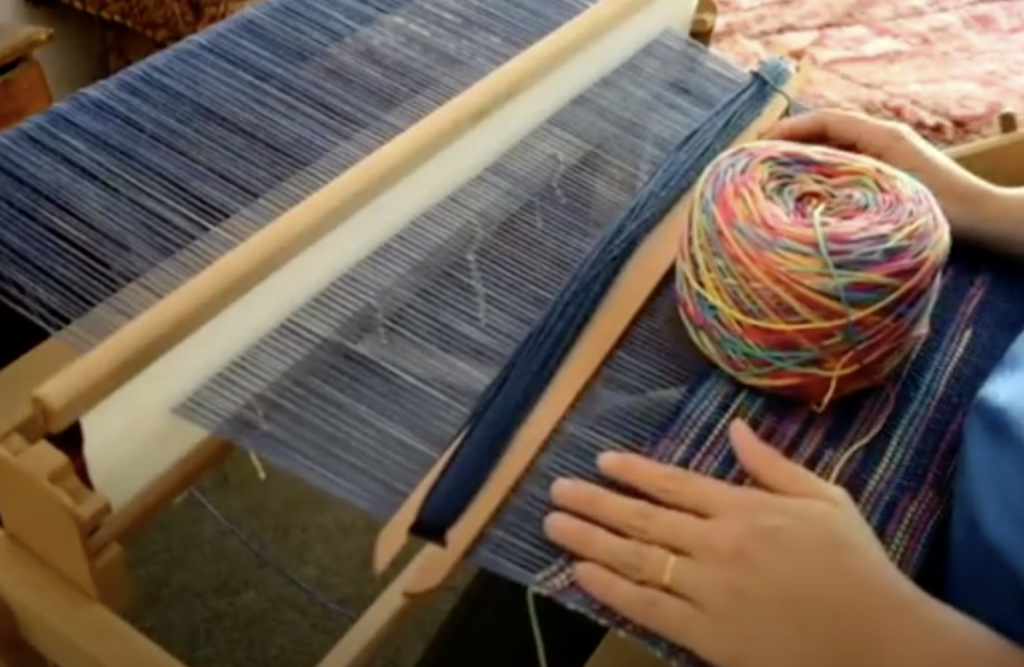

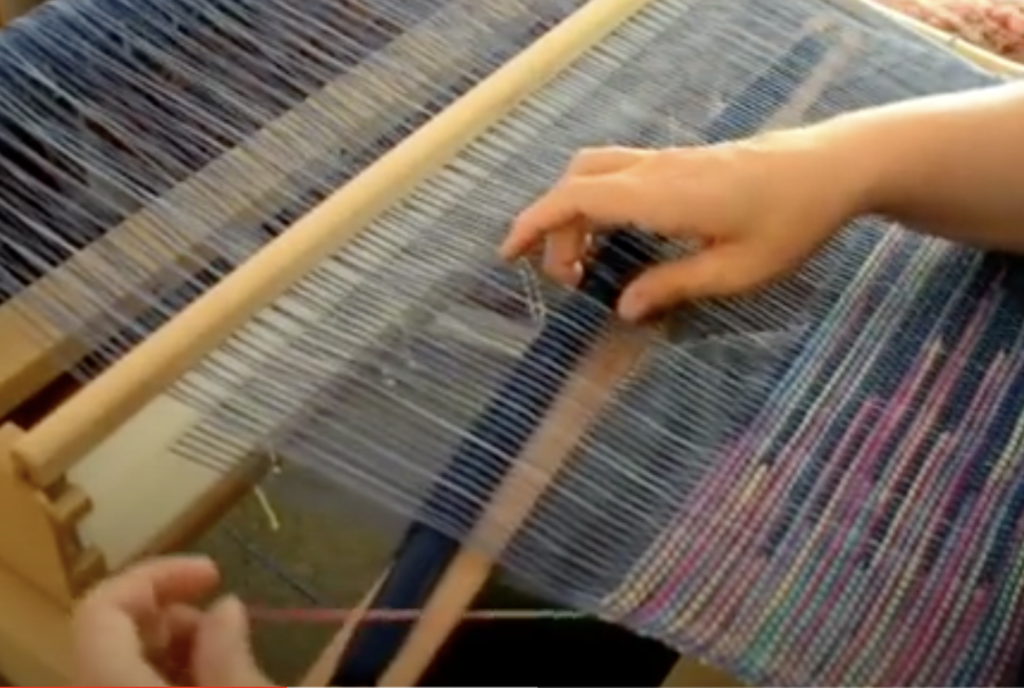
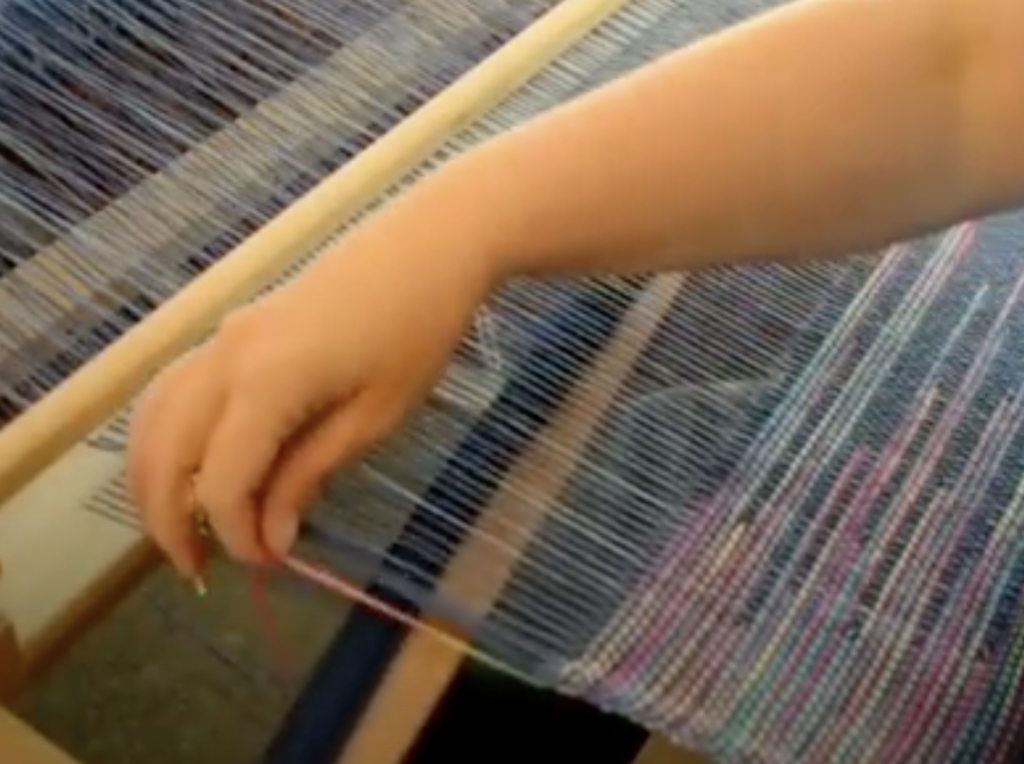
Take the shuttle the rest of the way through the shed at the left – as you would for your normal plain weave pick.
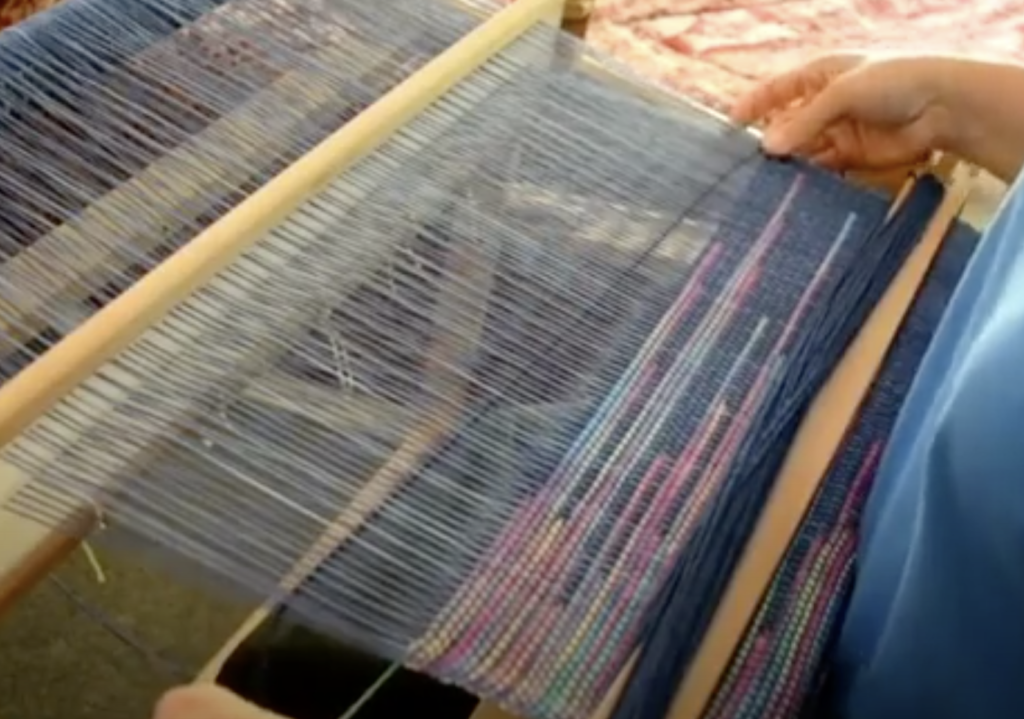 On the right hand side (where your shuttle entered), tidy up and prepare your weft yarn as though you’re going to beat the pick in. If you’re not familiar with how to do this, watch my free video on How to Weave Neat Edges. DON’T BEAT.
On the right hand side (where your shuttle entered), tidy up and prepare your weft yarn as though you’re going to beat the pick in. If you’re not familiar with how to do this, watch my free video on How to Weave Neat Edges. DON’T BEAT.
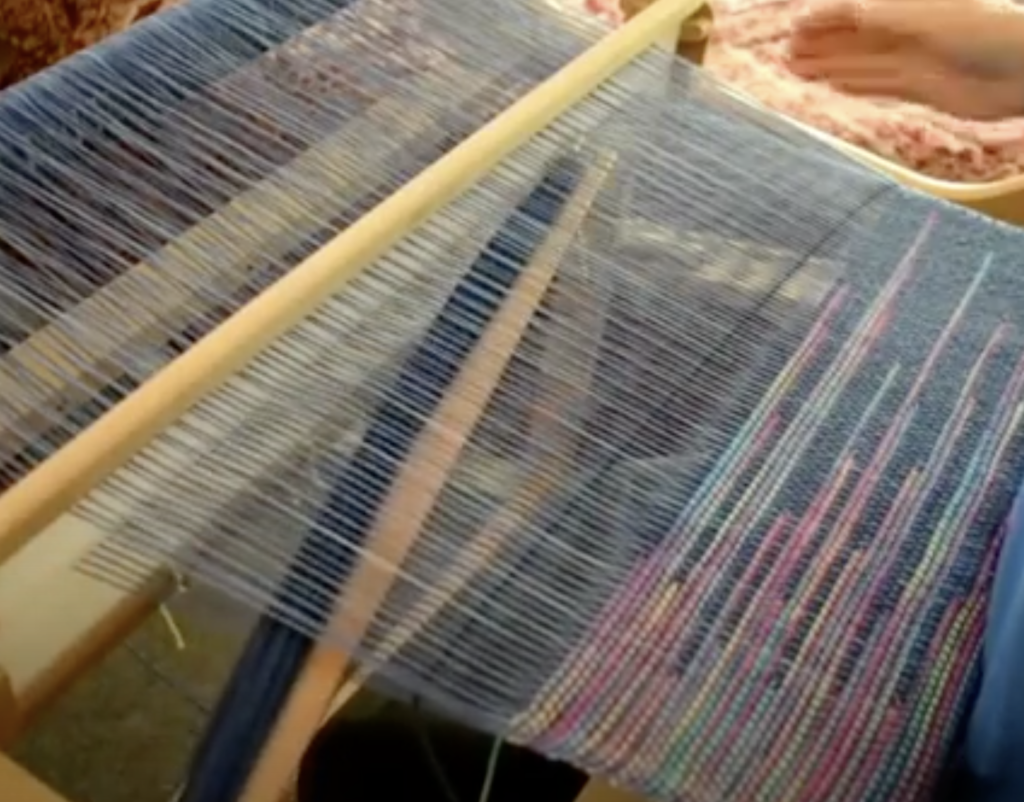
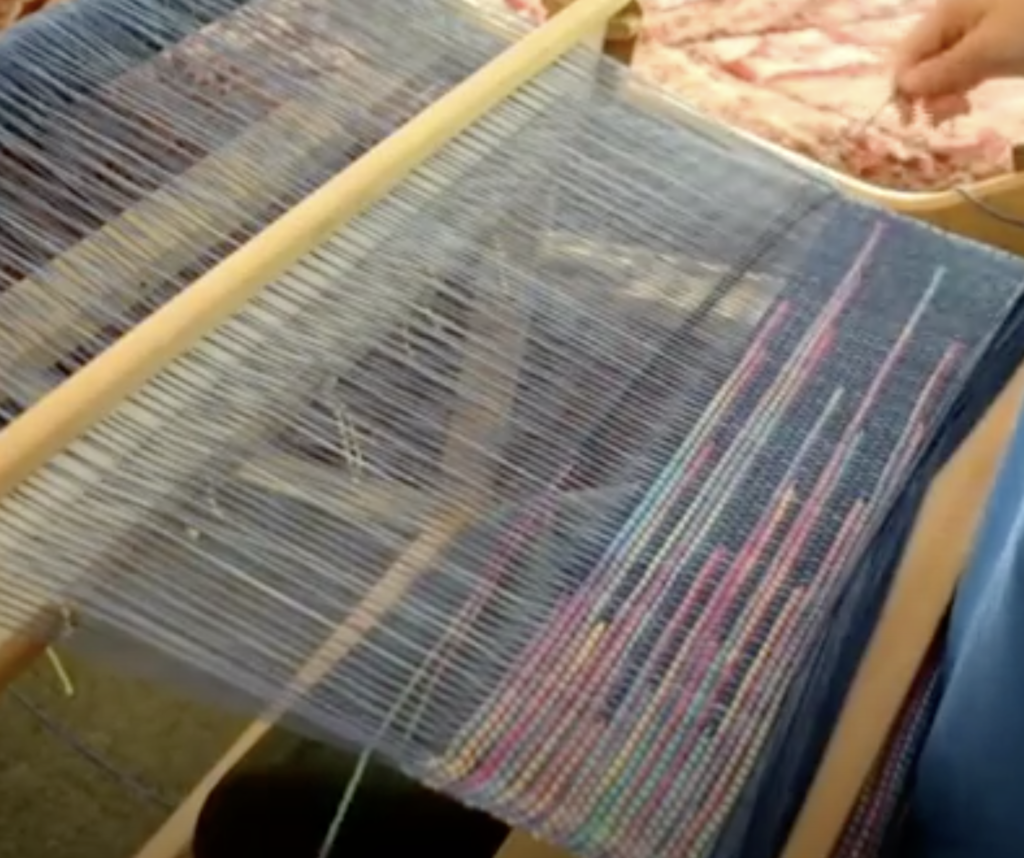
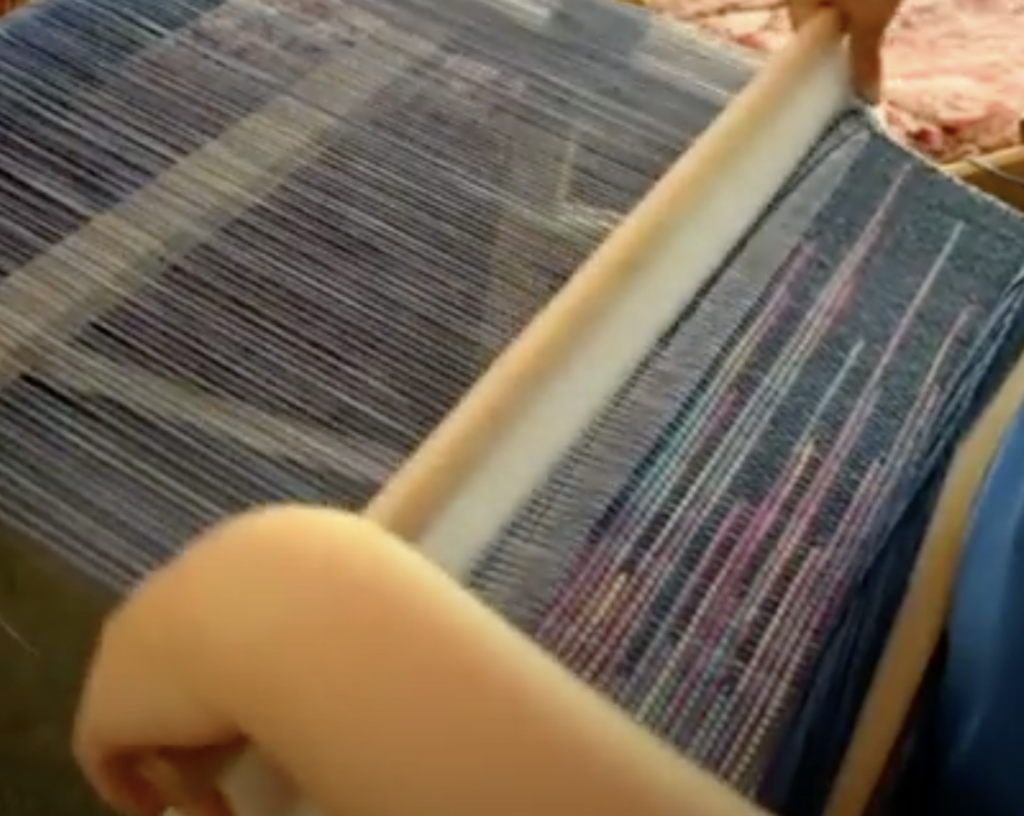
4. Using the same colour as the warp for one of your weft colours works great.
Too much colour can confuse the contrast of the clasped weft lines. In the tutorial, I used the same navy yarn for warp and weft no.1. I then used a contrast yarn for weft no.2.
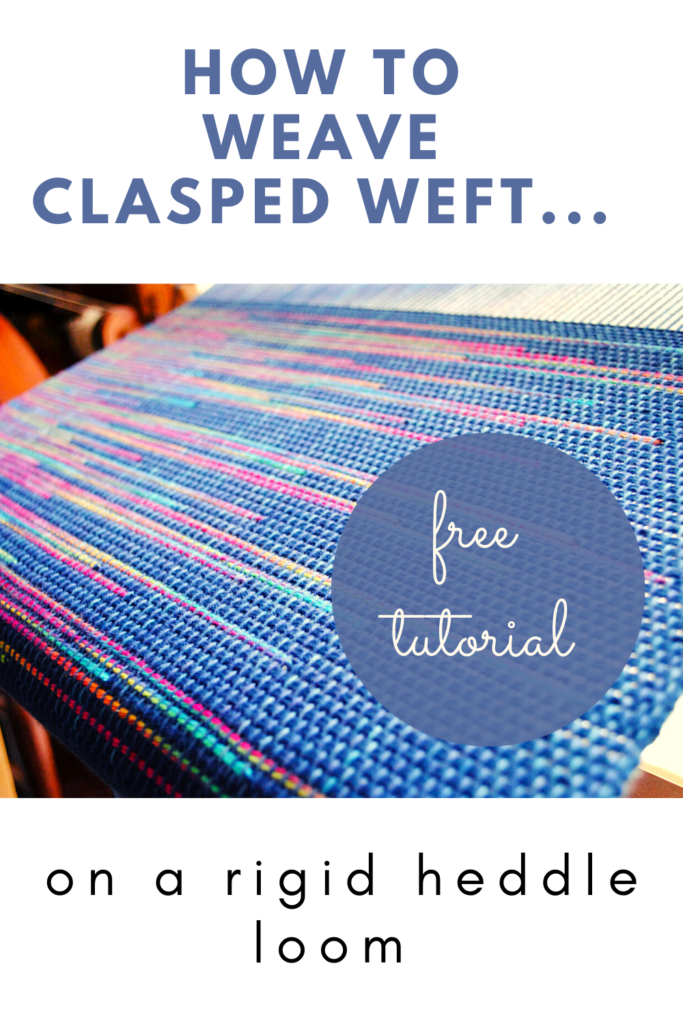

Weave Along Round Up
What I really love is the variety of mug rugs I’m seeing and the range of interpretations of my original design.
Monk’s Belt Magic!
Sampling can be a sensitive topic among weavers. Why, when it takes you so long to set up and weave a piece, would you subject yourself to dressing your loom “just for a sampler”?
Believe it or not, as a newer weaver, those were my thoughts exactly. When I read or heard a teacher recommending sampling before beginning the actual project, I would secretly snicker to myself “yeh, right, as if that’s ever going to happen, I just want to get to the REAL weaving!”
But if there is one thing that weaving has taught me over the years is patience! Oodles of patience. And, I’ve messed up enough times to know that, at least for some projects, sampling is a super good idea.
*This post contains affiliate links. For more information, please see my disclosure policy.
So, that brings us to my recent Monk’s Belt sample. Monk’s Belt is a very old weave structure and has been used in a variety of ways, according to time period and types of looms available.
My sampler used 4 shafts and 6 treadles. The threading is quite simple, as you thread in blocks, which means there is plenty of repetition. My warp is 8/2 cotton, sett at 20 epi. The finished sampler measures 7 x 44″. Tabby is used throughout.

